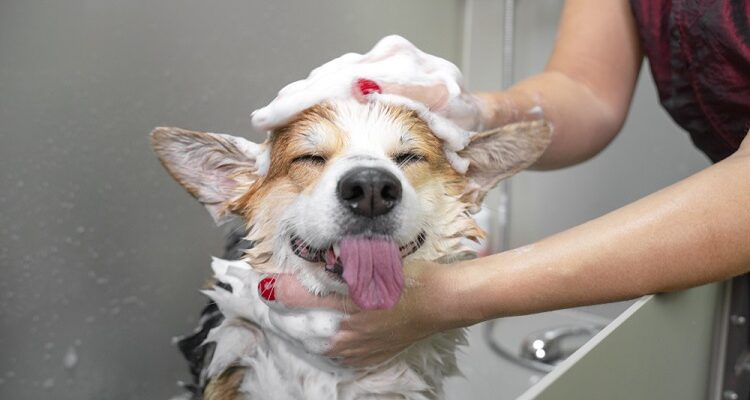Keeping your pet well-groomed is key to their health, happiness, and comfort. Regular grooming goes beyond aesthetics; it prevents common health issues and fosters a closer bond between you and your furry friend. Whether you have a dog, cat, or other pet, here are essential pet grooming tips to ensure your pet looks and feels their best.
Table of Contents
Why Pet Grooming is Important
Regular grooming plays a crucial role in your pet’s health. Grooming provides numerous benefits, from preventing infections to reducing shedding and promoting better skin health. A well-groomed pet is less likely to experience matting, skin issues, and discomfort caused by neglected fur or nails. Consulting with veterinarians for pet health can also offer insights into specific grooming needs based on your pet’s breed, health, and lifestyle.
Benefits of Regular Grooming for Pets
- Reduces Shedding: Brushing and de-shedding help reduce the hair your pet leaves around the house.
- Promotes Healthy Skin and Coat: Proper grooming distributes natural oils, making a shinier, healthier coat.
- Prevents Painful Matting: Especially important for long-haired pets, regular grooming keeps their fur tangle-free and comfortable.
- Early Detection of Health Issues: Regular grooming helps you notice skin irritations, lumps, or unusual behaviours that may signal health concerns.
Essential Pet Grooming Tips for Every Pet
Try incorporating these grooming tips into your routine to keep your pet healthy and happy. Each step will ensure they look and feel their best, from fur to nails.
Brushing: The Foundation of Pet Grooming
How Often Should You Brush Your Pet?
Brushing frequency depends on your pet’s coat type. For example:
- Short-haired pets (like certain dog breeds and short-haired cats) generally need brushing once or twice a week.
- Long-haired pets may require daily brushing to avoid matting and tangling.
- Seasonal Shedders: Pets who shed heavily in spring and fall may need more frequent brushing.
Benefits of Regular Brushing
Regular brushing removes loose fur, prevents matting, and stimulates the skin. It also reduces shedding, minimizing the amount of pet hair around your home.
Bathing: Keep Your Pet Fresh and Clean
How Often Should You Bathe Your Pet?
Bathing too frequently can strip your pet’s skin of essential oils, leading to dryness. Generally:
- Dogs: Bathing once a month is suitable for most dogs, though some may need it more or less often.
- Cats: Most cats are naturally clean and may not require bathing unless they get dirty or have a skin condition.
Best Practices for Bathing
- Use Pet-Safe Shampoo: Human shampoos can irritate your pet’s skin; always use a shampoo designed specifically for pets.
- Brush Before Bathing: Brushing out tangles before getting your pet wet will make the process easier.
- Water Temperature: Use lukewarm water to keep your pet comfortable and avoid skin irritation.
- Rinse Thoroughly: Leftover shampoo can cause skin irritation, so ensure all the product is rinsed out completely.
Nail Care: Keep Those Paws Healthy
Overgrown nails can cause discomfort and even pain for your pet. Regular nail trimming keeps them comfortable and prevents issues related to walking and posture.
How to Trim Your Pet’s Nails Safely
- Use of the Appropriate Tool: Invest in a quality pet nail clipper or grinder.
- Identify the Quick: The quick (a sensitive area that bleeds if cut) is visible in light-coloured nails. For dark nails, trim a small amount at a time to avoid cutting too deep.
- Trim Regularly: Trimming every 3-4 weeks is ideal for most pets. Regular trims keep the quick from growing too long.
Ear Care: Prevent Infections with Routine Cleaning
Ear cleaning is vital for preventing infections, especially in pets with floppy ears or those prone to ear issues. Regular ear inspections and cleaning can help keep infections at bay.
How to Clean Your Pet’s Ears
- Check the Ears Weekly: Look for redness, odour, or discharge.
- Use a Pet-Friendly Ear Cleaner: Avoid using water, which can cause infection.
- Gently Wipe: Use a gauze pad or cotton ball to get rid of dirt and debris. Nothing should be inserted deeply into the ear canal.
Dental Care: Maintain a Healthy Smile
Oral hygiene is often overlooked in pets, but dental care is essential to prevent bad breath, gum disease, and other health issues. Plaque buildup can lead to serious health conditions, making dental care a critical part of grooming.
Tips for Pet Dental Care
- Brush Your Pet’s Teeth: Use a pet-safe toothbrush and toothpaste, ideally 2-3 times a week.
- Dental Treats and Toys: Dental treats can reduce plaque buildup, and chew toys promote natural teeth cleaning.
- Regular Vet Checks: Your veterinarian can assess your pet’s dental health and recommend professional cleaning.
Coat Maintenance: Keeping Your Pet’s Fur Shiny and Healthy
The condition of your pet’s coat reflects their overall health. Regular grooming and nutrition are essential for a shiny, healthy coat.
Tips for a Healthy Coat
- Brush According to Coat Type: Different brushes work for different coat types: a slicker brush for long-haired pets and a bristle brush for short-haired ones.
- Use Coat Conditioners: A leave-in conditioner or detangling spray can help pets with dry fur.
- Healthy Diet: Feed your pet a balanced omega-3 and omega-6 fatty acids diet for coat health.
Special Grooming Tips for Different Pet Types
Each pet has unique grooming needs. Here are a few tips based on common pet types:
Grooming Tips for Dogs
- Double-Coated Dogs: Dogs like Huskies and Retrievers need extra brushing during shedding seasons.
- Short-Haired Breeds: They may need less frequent baths but benefit from regular brushing to remove dead skin and hair.
Grooming Tips for Cats
- Long-Haired Cats: Cats like Persians need daily brushing to prevent mats.
- Short-Haired Cats: Weekly brushing is usually enough, but use a rubber grooming tool to capture loose hair.
Grooming Tips for Small Pets (Rabbits, Guinea Pigs)
- Regular Brushing: Small pets shed, too, so regular brushing helps keep them comfortable.
- Nail Trimming: Small pets require nail trims every few weeks.
- Cage Cleaning: A clean environment is essential to prevent odours and infections.
Final Tips for a Positive Grooming Experience
Create a Calm Environment
Grooming should be a relaxing time for your pet. A calm environment, gentle handling, and positive reinforcement can turn grooming into an enjoyable experience.
Use Treats as Rewards
Rewarding your pet with treats can make them more receptive to grooming. This helps them associate grooming with positive outcomes, making the process smoother.
Be Patient
Some pets may take time to adjust to regular grooming. Patience and consistency will help your pet feel more comfortable and cooperative during grooming sessions.
Conclusion
Grooming your pet isn’t just about looks; it’s about keeping them healthy, happy, and comfortable. Incorporating these grooming tips into your routine will ensure your pet feels and looks their best while strengthening your bond. Regular grooming is a simple but impactful way to show love and care for your furry friend, leading to a healthier, happier life together.







Comments